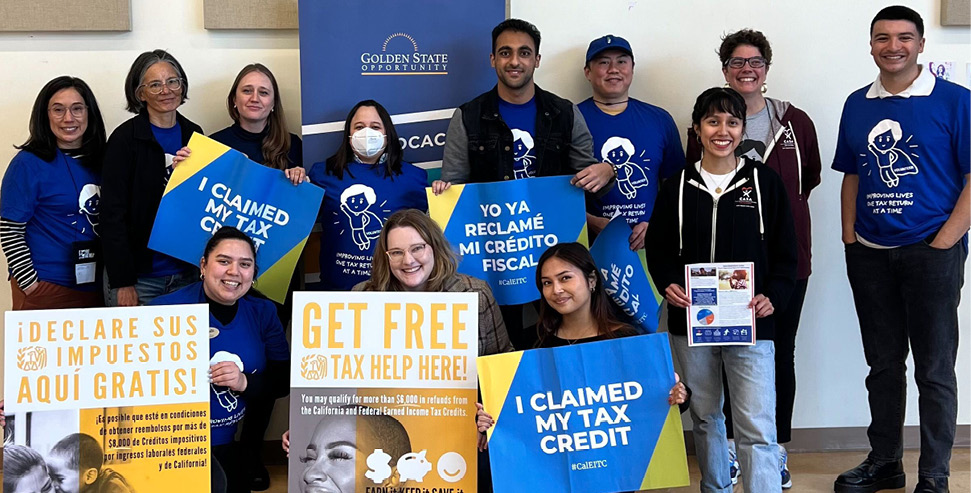SFCASA Connects Foster Youth with Valuable Tax Credits
August 29, 2024

California CASA (Court Appointed Special Advocates) estimates that over 72,000 children in California are in foster care, and according to the California Legislative Analyst’s Office, nearly 50% of them are unemployed four years after leaving foster care, more than 25% experience incarceration or have been detained, and 20% experience homelessness.
 These statistics are exactly why San Francisco CASA (SFCASA), a Golden State Opportunity Community Connect grantee, is so passionate about making financial education a reality for all foster youth. Two years ago, SFCASA took the next step in this and became an accredited Volunteer Income Tax Assistance (VITA) site, offering help to foster youth filing their taxes and claiming their tax credits, including the Foster Youth Tax Credit (FYTC).
These statistics are exactly why San Francisco CASA (SFCASA), a Golden State Opportunity Community Connect grantee, is so passionate about making financial education a reality for all foster youth. Two years ago, SFCASA took the next step in this and became an accredited Volunteer Income Tax Assistance (VITA) site, offering help to foster youth filing their taxes and claiming their tax credits, including the Foster Youth Tax Credit (FYTC).
The Foster Youth Tax Credit was created in 2022 to provide former foster youth ages 18-25 with a cash refund of up to $1,083 when they filed their taxes. SFCASA initially became interested in becoming a VITA site to connect former foster youth with the tax credit after connecting with another GSO grantee, John Burton Advocates for Youth (JBAY), and learning more about the new credit.
“When you are navigating foster care, the state becomes your parent in a sense, and the state doesn’t provide a lot of resources or do a lot of thinking about your life beyond foster care,” said Erika Dirkse, SFCASA’s Director of Programs. “When you’re moving around a lot and don’t have a consistent group of people teaching you, including how to file taxes, it’s hard. We’re looking to create economic inclusion and sustainability by connecting young adults with this information. Knowledge is power.”
Two years ago when SFCASA opened its foster and probation youth-serving VITA site, 42 youths were connected with its services. This year, it helped 72 youths file tax returns.
The FYTC claims have steadily increased. For tax year 2023, 4,613 former foster youth across California claimed the credit, while this year, 5,292 people claimed it, an increase of 679. The amount of money returned from the FYTC also increased from $4,794,823 in 2023 to $5,663,065 in 2024. That’s more money back in the pockets of working Californians. Getting the word about the tax credit out to foster youth is clearly working.
“We look at being a VITA site as very relational to our core work,” said Anna Lorenzo, Tax Project Specialist and Case Supervisor. “We meet every young person where they’re at, no judgment. There are no wrong doors. Lots of information provided. We’ll meet you where you’re at. It’s similar to how we approach our core work in that we’re all about building trust and encouraging individuals to come back and learn more.”
Hand in hand with the VITA work, SFCASA also focuses on building financial literacy in other ways, including setting up foster youth with bank accounts, connecting them to job training and job opportunities, and offering financial education.
SFCASA has also focused on expanding its services to areas called “VITA deserts”—areas with few, if any, VITA sites. Their efforts this year attracted clients from as far away as Southern California’s Inland Empire.
For Dirkse, the work is about connecting with foster youth and letting them know they are not alone.
“Every client is unique,” she said. “Foster care and juvenile justice is set up as a one-size-fits-all system, but it’s very much not. We like to get to know clients, and we see that with our tax volunteers as well. They’re here because they care and they want to help. I’ve learned so much from them.”
Learn more about SFCASA and their VITA program.